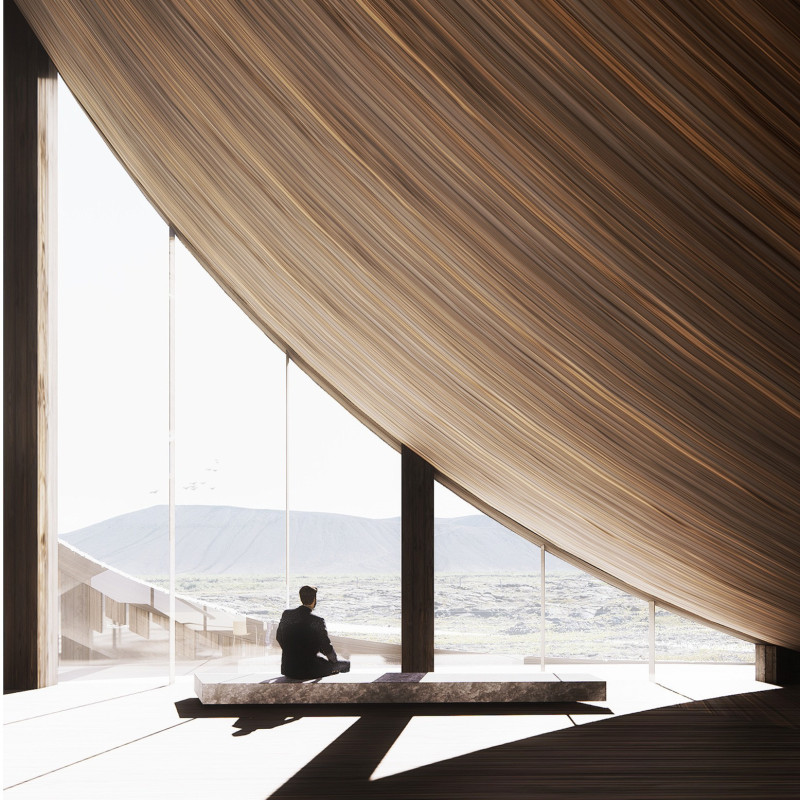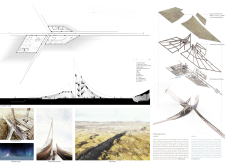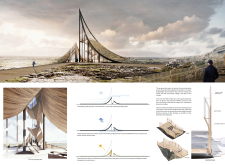5 key facts about this project
The primary function of the Peaks of Grjótagjá is to provide a space for tourism and public gatherings, offering visitors an opportunity to appreciate Iceland's unique geothermal features. Key components of the project include viewing platforms, communal areas, and educational spaces, all crafted to enhance the experience of individuals coming to explore the natural wonders of the site. The design promotes the idea of a hub for learning and leisure, inviting interaction with both the architecture and the stunning terrain that envelops it.
Reflecting on the architectural details, the building's form is inspired by the region's geological characteristics. The design features three principal elements—ridges, channels, and peaks—that mirror the natural topography. This not only creates visual harmony but also aids in natural wayfinding, guiding visitors through the landscape. The use of glu-lam timber for structural support allows for a flexible and warm interior, while expansive glass windows establish a seamless dialogue between the indoors and the outside world. The strategic placement of these windows brings ample natural light into the space, enhancing the overall experience for visitors.
The choice of materials in this project emphasizes sustainability and a strong connection to local resources. The exterior timber cladding is specifically selected to withstand the harsh Icelandic weather while blending harmoniously with the natural surroundings. Additionally, the implementation of an extended green roof not only contributes to thermal insulation but also integrates local vegetation into the design, promoting biodiversity and ecological balance.
A unique aspect of the Peaks of Grjótagjá is how it addresses environmental challenges through careful planning. Natural wind barriers are integrated into the building’s profile, ensuring comfort for guests year-round. The design also incorporates a system for rainwater capture, further underscoring the project's commitment to sustainability and responsible resource management.
The architecture goes beyond aesthetics; it serves as an educational platform that deepens the public’s understanding of the geothermal processes at work in the region. Spaces dedicated to educational programming allow for interactive learning experiences, giving visitors insights into the science behind the geothermal pools and the geology of the landscape.
In examining the project as a whole, it becomes evident that every design choice contributes to a cohesive vision that respects and celebrates the existing environment. The careful alignment of the structure with the natural elements encourages an appreciation for Iceland's distinctive topography. By creating a space that harmonizes with the surroundings, the Peaks of Grjótagjá illustrates the potential of architecture to enhance a location's inherent beauty rather than overshadow it.
For those interested in exploring this project further, a detailed presentation is available showcasing architectural plans, architectural sections, and other architectural designs. This exploration provides a deeper understanding of the innovative ideas and thoughtful strategies that define the Peaks of Grjótagjá, offering opportunities for reflection on the role of architecture in creating meaningful relationships between people and their environment.


























